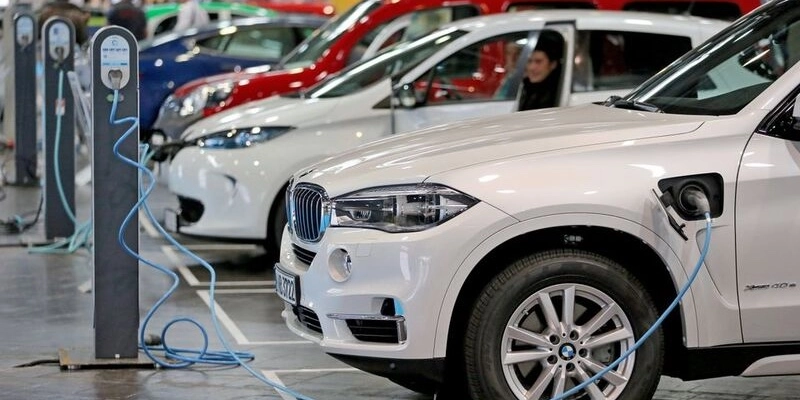The German electric vehicle (EV) market demonstrated a contrasting dynamic between fully electric models and plug-in hybrids (PHEVs) in October.
While sales of the former reached 35,480 units, marking a 5% decrease compared to the same month last year, the latter segment experienced an 18% increase, with 19,340 units sold.
Overall, the EV market saw a 2% increase, with a total of 54,850 vehicles sold in the tenth month of 2024.

Within this context, Wolfgang Huber, Project Manager for Energy, Sustainability, and E-Mobility at Autohaus Gotthard König GmbH, tells Mobility Portal Europe:
“With PHEVs, original equipment manufacturers (OEMs) are offering vehicles that fit into the existing ecosystem, allowing people to maintain their current habits.”
Year-to-date figures show an overall 27% drop in registrations of fully EVs, while the PHEV market has seen a 9% growth.
What is the reason for this?
In the corporate sector, tax incentives play a crucial role in the popularity of PHEVs.

As explains Harald M. Depta, lecturer and consultant at energiefahrer, to Mobility Portal Europe, company car drivers who choose PHEVs benefit from reduced taxation on the monetary benefit.
The tax rate drops to 0.5% of the gross list price, compared to 1% for conventional cars—a key economic factor influencing the decision in favour of a plug-in hybrid.
Furthermore, Depta adds: “PHEVs allow users to become acquainted with eMobility without the often unwarranted concerns over charging infrastructure or limited range.”
At this point, it is important to note that Germany is heavily investing in the rollout of charging points, with an ambitious goal to reach one million by 2030.
Currently, the country has over 120,000 chargers, though their average occupancy is only 12.5%, and in certain regions, this varies between 3% and 23%, with cities like Berlin and Munich leading in usage rates.
This provides convenience and reassurance to drivers, though from a business perspective, the underutilised network costs someone money.
According to industry specialists, the solution requires a blend of government subsidies and a ‘refuelling’ network that fosters consumer confidence in adopting electric vehicles.
A pertinent aspect of PHEV selection is the discrepancy between official WLTP consumption figures and real-world usage.
What does WLTP refer to? The Worldwide Harmonised Light Vehicle Test Procedure is a globally standardised protocol for measuring vehicle fuel consumption, CO₂ emissions, and range in the case of PHEVs.
According to Depta, studies have shown that real-world consumption can exceed official figures by more than 200%, though many users are not fully aware of this difference.
This creates a distorted perception of these vehicles’ efficiency.
“Official WLTP consumption values for plug-in hybrids are often significantly more optimistic than reality,” clarifies the expert.
From a corporate perspective, PHEVs represent an opportunity to demonstrate sustainability advancements.
“For OEMs, PHEVs present a transitional opportunity to meet fleet emissions limits with minimal effort,” highlights Huber.
He forecasts that sales of fully electric vehicles will grow faster than those of PHEVs in the coming year due to emission limit pressures.
The environmental impact of plug-in hybrids is closely tied to user behaviour.
If the car is regularly charged and primarily used in electric mode, significant emissions reductions can be achieved.
However, in practice, many users do not fully exploit the electric potential of PHEVs, resulting in higher-than-expected consumption.
“In conclusion, the popularity of PHEVs in Germany rests on a combination of tax incentives, practical considerations, and partially incomplete information on real-world efficiency,” states Depta.
He adds: “While they may offer advantages for some, a critical examination of their true environmental impact and individual usage behaviour is necessary to realistically assess their contribution to emissions reduction.”
Ford considers increasing PHEV production
According to Europa Press, Ford has invested approximately 2 billion dollars (just over 1.861 billion euros) in transforming its production towards EVs.
However, in August, the manufacturer announced the cancellation of plans to produce certain electric SUVs and the delay in manufacturing its next battery-powered truck.
In this context, Chief Financial Officer John Lawler warned that the company was considering replacing fully electric models with hybrid vehicles.
This strategic shift is estimated to potentially cost the company an additional 2 billion dollars.








